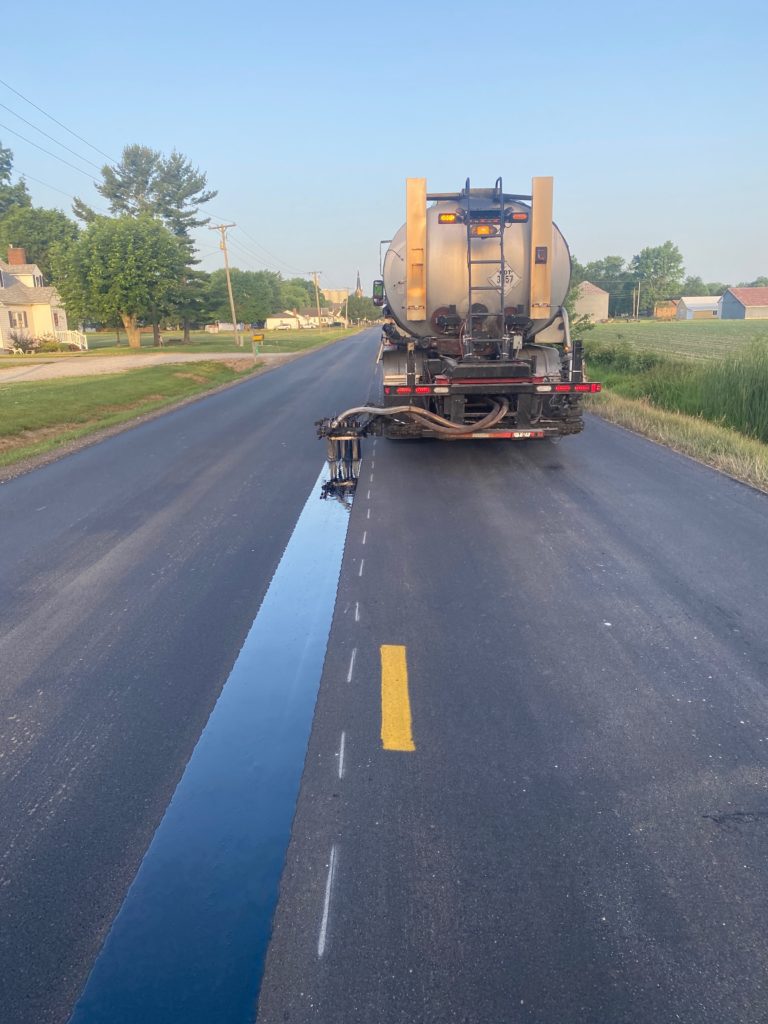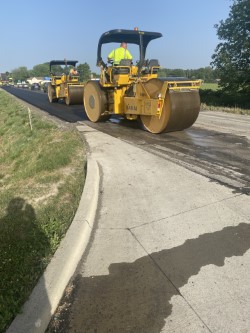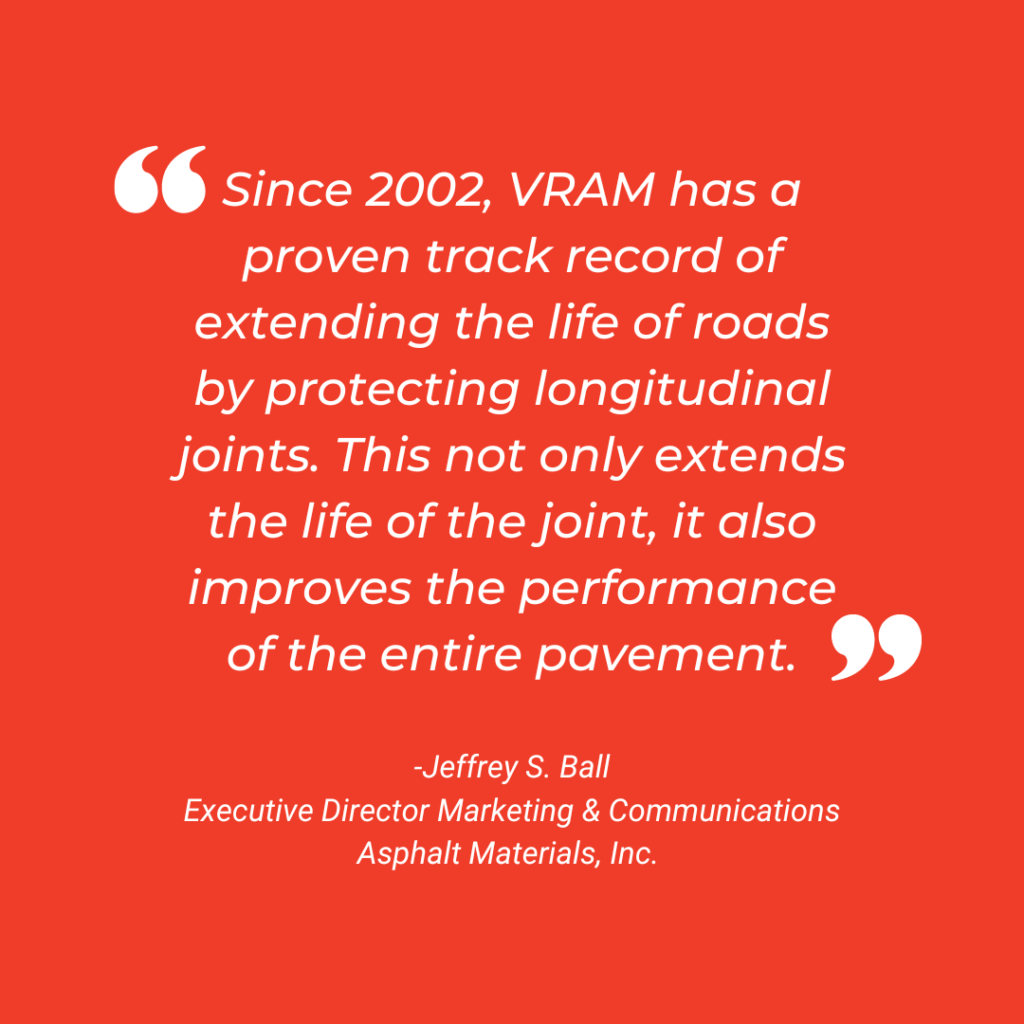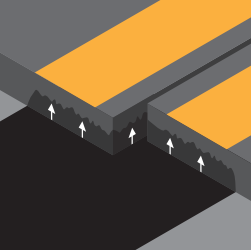About this project
On June 15, 2022, a Void Reducing Asphalt Membrane (VRAM) project took place in Effingham County, Illinois. This 136,294-foot project on US-40 went from Salt Creek to 1500th Avenue in Teutopolis. The VRAM application for the centerline joints was targeted at 18” wide. The VRAM applicator for this project was Illiana, and the prime paving contractor was Howell Construction.

Once the VRAM was placed, the paving of the road began! The paving equipment that was used for this project included a CAT AP1055F paver, 2-Sakai R2H2 breakdown rollers, both working in tandem, and Hamm GRW280i – 25-ton pneumatic intermediate roller and a Hamm HD 110i – 10-ton finish roller.
The paving process took began mid-morning with paving in the eastbound lane heading westward. The width of the road was measured at approximately 13 feet wide. It was estimated that the VRAM material worked its way up into the mix about 1 inch. The breakdown rollers were making 5 static passes in addition to 5 passes with the intermediate roller.
VRAM is the materials approach to extend the life of longitudinal joints.

Road managers know the longitudinal joint is the first part of the pavement to fail. This is due to the high permeability and because this joint is severely susceptible to the natural elements, such as air and water, that work down into this gap. This causes the joint to deteriorate, crack and pothole. And when the longitudinal joint fails, the rest of the road follow. This will lead to an increased need for maintenance and repairs. By using VRAM, which is mostly asphalt, at time of construction, permeability will be reduced at the centerline joint, thus protecting the most critical area of the road to protect.
As federal, state and local agencies are collaborating with companies on new infrastructure projects, sustainability and resilience are key drivers that are directing their efforts. Specifically teams are focused on building more resilient and sustainable infrastructure to benefit and protect communities. They are looking for technologies, materials and processes that will help improve the resilience of at-risk infrastructure.
VRAM has been and can continue to be a big part of these collaborations as more and more states adopt this innovative, sustainable technology.

VRAM is applied at the time of construction before the hot mix asphalt (HMA) is laid. This means the VRAM will be located under the surface of the HMA. Once the placement of the hot mix asphalt is complete, heat will cause the VRAM to physically migrate upwards, resulting in the filling of voids and therefore reducing permeability. This helps ensure the protection of the most important or critical area of the road to protect, the centerline or longitudinal joint.
Editor’s Notes:
- Centerline joints and longitudinal joints are often used interchangeably in describing the area of the pavement where two sections come together.
- VRAM, Void Reducing Asphalt Membrane is often referred to in Illinois as LJS, Longitudinal Joint Sealant.
- Depending on the situation VRAM can be sprayed at different width’s. It should be noted that 18” is a typical application width for centerline applications.
J-Band® is a VRAM product of Asphalt Materials, Inc. and was created in the labs of The Heritage Research Group.
J-Band® and CCAP® are registered trademarks of Asphalt Materials, Inc. AMIBIND™, AMIBOND™, AMICYCLE™, AMIGUARD™, AMISEAL™ are trademarks of Asphalt Materials, Inc.

